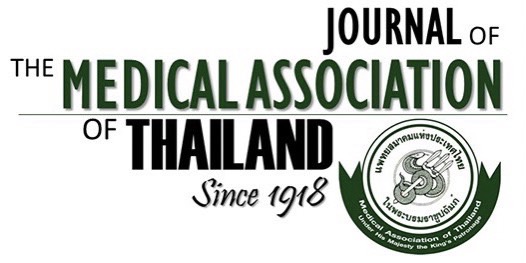The Functional Outcomes in Anorectal Malformations after Posterior Sagittal Anorectoplasty
Niramon Sukarnjanaprai MD*, Monawat Ngerncham MD*, Mongkol Laohapensang MD*
Affiliation : * Division of Pediatric Surgery, Department of Surgery, Siriraj Hospital, Mahidol University, Bangkok, Thailand
Background : The objectives were to study the functional outcomes and find the predictive factors of functional outcomes in
Anorectal Malformations (ARMs) after Posterior Sagittal Anorectoplasty (PSARP).
Material and Method: Retrospective review of 58 ARMs who underwent PSARP procedure in Siriraj Hospital, Mahidol
University from 1996 to 2010 was conducted. The medical data and sacral ratio measured from radiographic database were
reviewed. Patients and parents were interviewed about the current functional outcomes according to the International
classification (Krickenbeck) for postoperative results. The analyzed functional outcomes included voluntary bowel movement,
total continence constipation, and soiling.
Results : Diagnostic ARM type was classified into 25 (43.1%) rectourethral fistula, 19 (32.8%) no fistula, 10 (17.2%)
rectovesical fistula, 2 (3.4%) rectovaginal fistula and 2 (3.4%) vestibular fistula. The average age at the time of PSARP was
1.1 years old (range 0.2 to 7.6). Thirty-seven (63.8%) patients had voluntary bowel movement including 18 (31.0%) patients
with total continence. Thirty-one (53.4%) patients had constipation including 13 (22.4%) grade 1 constipation and 17
(29.3%) grade 2 constipation. Thirty-six (62.1%) patients had soiling including 21 (36.2%) grade 1, 11 (19.0%) grade 2 and
3 (5.2%) grade 3 soiling. Analysis of multiple clinical variables found that patients who underwent PSARP at ages younger
than 6 months are more likely to have voluntary bowel movement (odds ratio = 4.1, 95% CI 1.02 to 16.4, p = 0.047), and
patients with Down syndrome more likely to develop constipation than patients without Down syndrome (odds ratio = 4.4,
95% CI 1.1 to 18.0, p = 0.04).
Conclusion : Several different functional outcomes may occur in ARMs after PSARP. Early PSARP may result in voluntary
bowel movement. Constipation is the most common poor functional outcome. Patients with associated Down syndrome are
more likely to develop constipation. Regardless, most patients with constipation and soiling after PSARP responded well to
symptomatic treatment, redo operations were seldom required.
Keywords : Anorectal malformations, Posterior sagittal anorectoplasty, Voluntary bowel movement, Incontinence, Constipation, Soiling



